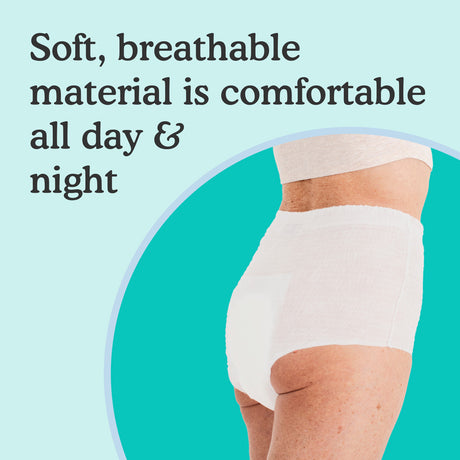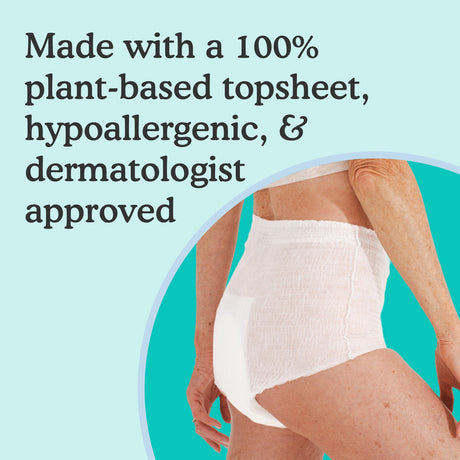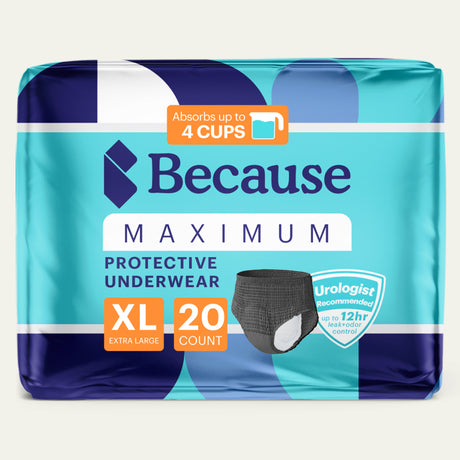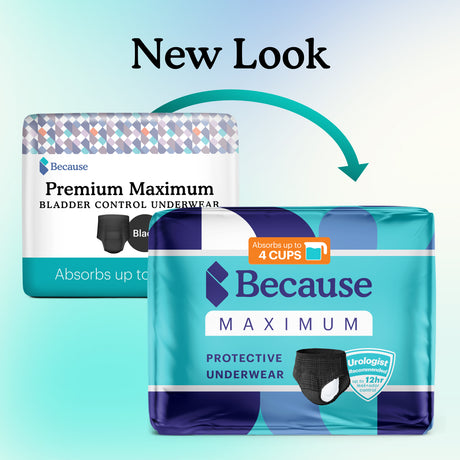Millions of men and women in the U.S. suffer from an overactive bladder (OAB). This type of incontinence occurs when muscles in the bladder contract irregularly, leading people to experience the urgent need to urinate even when their bladders aren't full. If you have OAB, you know how disruptive frequent trips to the bathroom can be. An overactive bladder has been shown to dramatically reduce the quality of life — even increasing the risk of falling due to the need to get to the toilet more times during the day. Fortunately, there are effective treatments available for the condition.
Medications like oral anticholinergic drugs, surgery, and Botox injections are common clinical interventions used to relieve overactive bladder symptoms. Acupuncture is one potential natural treatment for overactive bladder syndrome. We'll discuss what it is and review what the science says about using it as a complementary or first-line treatment for OAB.
What Is Acupuncture?
Acupuncture is a natural healing tradition from traditional Chinese medicine used in China and other parts of Asia for at least 2,500 years. Since the 1970s, acupuncture has become increasingly popular in the U.S. and Europe. Today, people use it alongside or in place of Western medicine treatments for various conditions, including arthritis, migraines, and back pain.
Traditionally, acupuncture involves inserting tiny needles called microneedles into targeted areas of the body called acupoints. Today, acupuncture treatment can also happen with electrical currents. This form of acupuncture is called electroacupuncture, or EA.
Does Acupuncture Help with an Overactive Bladder?

There are some studies suggesting acupuncture is successful at reducing symptoms like urinary urgency and frequency. However, the quality of the majority of the studies could be better. Some use a sample size too small to be statistically significant. Others don't have strict eligibility criteria for participants, rigorous protocols for data collection, or placebo groups.
In 2018, researchers outlined a protocol for an upcoming clinical trial to explore the effects of acupuncture on older adults with OAB. The study would give one group actual acupuncture treatment through an experienced therapist while another would undergo sham acupuncture. Sham acupuncture is when needles or electrical current is introduced to the body but not at the acupuncture points for a condition.
In the case of this study, needles would be used, but they wouldn’t be able to penetrate as deeply as the ones used for acupuncture. The researchers developed exclusion criteria and outlined ways to ensure good data collection, but the group of patients would be limited to only 100 people. This meant only 50 would receive acupuncture for their symptoms of overactive bladder. Based on that small sample, it wouldn't be possible to determine if acupuncture could result in a statistically significant difference.
Due to the flaws of many clinical trials, systematic reviews and meta-analysis studies provide the best information about acupuncture. This type of research involves reviewing the results of multiple studies to create a larger sample size and then analyzing the data to draw conclusions.
One systematic review and meta-analysis conducted in 2018 examined information from nine databases. The study looked at 10 randomized controlled trials that included 794 patients. At the end of the analysis, the researchers concluded that EA was more effective than sham EA at reducing symptoms of OAB. However, they state that the included studies were all small and that larger ones could determine whether acupuncture for overactive bladder is an effective treatment on its own or with OAB medications.
Based on the current information, acupuncture might be beneficial for an overactive bladder, but there isn’t enough evidence to prove it works as a first-line treatment.
How Does Acupuncture Work for Urinary Incontinence?
Traditional Chinese medicine holds that illnesses and diseases occur due to problems with energy flow through the body. In acupuncture, energy travels along strings or paths called meridians. By stimulating points along these meridians, the ancient Chinese healers thought they could change energy flow and treat medical conditions.
Modern acupuncture proponents believe that treatments work by stimulating nerves in the body. For conditions related to pain, they typically believe stimulation increases the body's natural healing processes. In the case of OAB, practitioners may state that nerve stimulation reduces the muscle activity of the bladder, but there isn’t enough scientific evidence to prove this theory yet. Another idea is that acupuncture might strengthen the muscles of the pelvic floor that support the bladder, making urine less likely to leak. Again, we don't know enough about acupuncture yet to say if this is true.
The National Center for Complementary and Integrative Health (NCCIH) states that much of the benefits of acupuncture for any condition may be due to the belief of patients that it works. It notes that when acupuncture is compared to no treatment in studies, the natural healing regimen tends to produce significant improvements. However, when compared to sham acupuncture, there tends to be only a slight improvement. These results suggest there is a mental and emotional aspect to the effectiveness of acupuncture.
This finding should encourage you to try acupuncture points for an overactive bladder. The power of the mind is great. Suppose you experience a reduction in urinary frequency and other symptoms. In that case, it ultimately doesn't matter if you feel better due to nerve activity in your body or simply because you believe that overactive bladder acupuncture works.
The Benefits of Acupuncture for Overactive Bladder
Researchers concluded that acupuncture might make a person less likely to experience urine leakage and accidents. For those with OAB, this could mean being able to change incontinence protection less frequently. It might also minimize the risk of trip and fall accidents by reducing the urgent need to reach the bathroom.
In addition, scientists who conducted the meta-analysis found that the treatment group studied woke up to use the bathroom at night less frequently. This effect suggests that acupuncture might help people with OAB sleep better with fewer interruptions.
The Best Acupuncture Points for Overactive Bladder

A study conducted in 2014 at Whipps Cross University Hospital and University College of London Hospital found that a small group of patients with overactive bladder saw improvements in symptoms from acupuncture at three points:
- SP6: A point located on the big-toe side of the leg about four finger-widths above the ankle on the shin bone is the junction of the spleen, liver, and kidney meridians.
- CV4: A point called the gate of origin is about one hand's width below the navel on a line that runs up the center of the body.
- KI3: A point located in the depression behind the ankle is on the kidney meridian.
Acupuncture practitioners may target these or other acupuncture points for OAB.
The Limitations of Acupuncture for Overactive Bladder
Although it may reduce the severity of symptoms in some people, acupuncture likely won't cure overactive bladder. People who try it may have fewer episodes of urinary incontinence, but they probably won't be able to go without bladder protection or eradicate their symptoms entirely.
Does Acupuncture Cause Side Effects?
Experts consider acupuncture a safe option that is unlikely to cause major adverse events. Some possible side effects of acupuncture include:
- Drowsiness
- Nausea
- Pain in the area where treatment was performed
- Bleeding or bruising at the treatment sites
These minor side effects resolve within a few hours to a couple of days after treatment.
Some people may not be able to safely undergo acupuncture, including those who:
- Are pregnant or plan to become pregnant
- Have seizure disorders
- Use a pacemaker or sacral nerve stimulation device
- Take blood thinners
- Are diabetic
- Have bleeding or blood clotting disorders
- Experience numbness or loss of feeling in the feet or legs
- Have broken or red skin in the area of the acupuncture point
People who are allergic to stainless steel should avoid acupuncture using needles.
Can Acupuncture Be Used in Conjunction with Conventional Overactive Bladder Treatments?
Acupuncture is unlikely to interact with other treatments for OAB. In fact, doctors often recommend those who want to try acupuncture continue with other treatments for their OAB symptoms, such as medications.
What Are Other Natural Treatments for Overactive Bladder?

Acupuncture is one of the alternative remedies people use for an overactive bladder. Let's take a look at some others.
Food Journaling
What you eat and drink may contribute to OAB symptoms. Not drinking enough water and other fluids could worsen symptoms, and some foods can irritate the bladder. Because of this, doctors may recommend keeping a journal of everything you eat or drink during the day and noting your symptoms. Over time, you may find some triggers worsen urinary frequency and urgency. Once you know your triggers, you can reduce your intake or avoid them to relieve symptoms.
Cognitive Behavioral Therapy
Cognitive behavioral therapy, or CBT, is a form of talk therapy used to treat mental and physical health disorders. CBT teaches you how your thoughts and feelings contribute to your physical symptoms. You may also learn how to cope better with OAB and deal with symptoms.
Biofeedback
Another behavioral therapy, biofeedback, involves using electrical sensors that detect small changes in your body. During a session, a therapist helps you see these changes on your own. Through biofeedback, you may learn how to control your pelvic floor muscles better, so you're less likely to experience urine leakage and accidents when you need to use the bathroom.
Should You Try Acupuncture for Overactive Bladder?

With any alternative or complementary treatment, you should always talk to your medical provider first. Your doctor can help you decide if acupuncture is safe for you. If medications and bladder control exercises don't alleviate your symptoms, you and your doctor can discuss whether you'd be a good candidate for natural treatments.
Are you struggling to find the perfect pad for overactive bladder protection? Find the perfect fit with our bladder protection quiz, and try a sample of our highly absorbent pads!
If you're struggling with incontinence, join one of our private support groups today!
Women's Incontinence Support Group
Men's Incontinence Support Group
Sources:
PubMed Central. (2016). Transcutaneous Tibial Nerve Stimulation for Overactive Bladder in Women: A Randomized Controlled Trial. https://www.ncbi.nlm.nih.gov/pmc/articles/PMC4821440/University of Pennsylvania. (2018). Effects of Acupuncture for Overactive Bladder. https://www.med.upenn.edu/patientcenteredresearch/assets/docs/2018-2.pdf
BioMed Central. (2018). Acupuncture for Overactive Bladder in Female Patients: A Randomized Controlled Trial. https://trialsjournal.biomedcentral.com/articles/10.1186/s13063-018-2706-4
PubMed Central. (2018). Acupuncture for Overactive Bladder: A Randomized Controlled Trial. https://www.ncbi.nlm.nih.gov/pmc/articles/PMC5841968/
National Center for Complementary and Integrative Health. (n.d.). Acupuncture: What You Need to Know. https://www.nccih.nih.gov/health/acupuncture-what-you-need-to-know
HealthCMi. (n.d.). Acupuncture Controls Overactive Bladder. https://www.healthcmi.com/Acupuncture-Continuing-Education-News/1337-acupuncture-controls-overactive-bladder
University Hospital Southampton NHS Foundation Trust. (2016). Acupuncture for an Overactive Bladder. https://www.uhs.nhs.uk/Media/UHS-website-2019/Patientinformation/Womenshealth/Acupuncture-for-an-overactive-bladder-3111-PIL.pdf
































